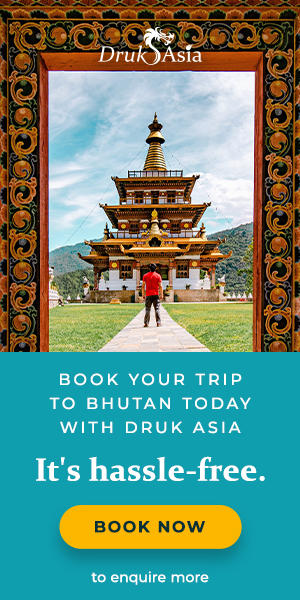How should I dress in Bhutan?
About to head to Bhutan for the adventure of your lifetime but don’t know what to pack? Fret not. Here’s a guide of useful clothing items to take with you to Bhutan.

You’ve booked a trip to Bhutan. You’re excited! You have your Bhutan visa, itinerary, and plans all in place, but then comes the hard part — packing. Should you prepare for cold weather? How conservatively should you dress?
Well, fret not, because today, we’ll talk about everything you need to know about how you should dress in Bhutan.
How cold is Bhutan?
When packing, keep in mind that Bhutan has three different climate zones because of the varying altitudes. The northern zone is the coldest. Mountain tops are covered in snow all year round and lower areas are cool even in summer.
At the same time, the central zone is seasonal. Winters are cool and dry with clear blue skies, whereas summers are warm before the monsoon.
Last but not least, the southern zone is hot and humid with a monsoon that lasts throughout the year. Therefore, expect lots of rain.
Here are the average temperatures in Bhutan throughout the year. As you might notice, different places within the country may have drastically different temperatures during the same month.
The Bhutanese have an official dress code for formal occasions, but for tourists, there aren't any strict regulations, except for when visiting religious places such as dzongs or monasteries.
Do wear long pants and avoid sleeveless tops when visiting such places or wear a jacket if you are wearing a sleeveless top.
A list of clothing items you should take with you to Bhutan
1. Jacket
Charting through different altitudes means that the temperature varies. Therefore, carry a jacket with you in case it gets cold. Piling on layers that you can easily remove is an ideal strategy.
Bring a few jackets including a windbreaker so you can create layers to suit the climate. If you visit during the winter, do include a solid winter jacket.
2. Good walking shoes
Good walking shoes are recommended. If you opt for an extensive hike, a pair of good quality hiking boots are a must. But even if you don’t hike the Lunana Snowman Trek (a challenging trek that takes 28 days), you would probably go on a short hike or two. At the very least, you’ll hike up to Tiger’s Nest Monastery.
Furthermore, you’ll likely visit villages without proper paving. Even the paths in the cities might be uneven. Therefore, you should have a comfortable pair of footwear. Bonus points if they are waterproof.

3. Socks
There are several reasons to pack a few pairs of socks. For one, Bhutan is cold. Socks will keep your feet warm and toasty. Moreover, they offer protection while hiking, keeping you safe from stray branches or insects.
On top of that, you will have to remove your shoes when entering temples or dzongs. Thus having a pair of socks with you means that you won’t have to go barefooted.
The type of socks you should bring depends on the season. If you’re there during the winter, you’d want thick, warm socks, whereas thin, lightweight ones are better for the summer months.
4. Comfortable long pants
Some parts of Bhutan are freezing cold, so pack some long pants. Expect to do a fair amount of walking, so they should be comfortable. Furthermore, you must cover your legs when entering religious sites, so having long pants on makes it easier.
5. Long-sleeve shirt
Since you have to also cover your arms when entering a religious site, it’s simpler to wear a long-sleeve shirt. Long-sleeve shirts are likewise ideal for the warmer days in Bhutan.

6. Thermal underwear
If you travel during the winter, extra warmth is always welcomed. Prepare for the cold by cladding yourself in thermal wear under the layers.
Depending on where you stay, your hotel might be cold too, and you’ll like to wear a layer under your pyjamas for a good night's sleep.
7. Hats/Scarves/Gloves
At the risk of sounding like a broken record, Bhutan can get freezing cold. Frostbites aren’t fancy, so take any help you can get! Of course, this includes hats, scarves, and gloves.
However, you will be required to remove your hat before entering a religious site.
In summary
Visiting Bhutan means visiting many dzongs, temples, and monasteries. Since you are required to dress modestly when entering these places, it is wise to wear long-sleeve shirts and long pants. Wear thermal wear as appropriate during the winter, because it can get really cold.
Ultimately, bring a jacket that you can put on and take off as necessary as you travel through the different sites of varying altitudes.
What do the locals usually wear?

The locals usually wear their traditional dress, gho for men, and kira for women. It is mandatory for the Bhutanese to wear their traditional dress when in school, government offices, during festivals, and on important occasions.
The gho that the men wear looks like a dress. They typically have striped or plaid designs. The gho is held in place by a kera, which is a woven cloth belt. The kera turns the upper portion of the gho into a large pouch that can be used to carry things.
Nowadays, Bhutanese men wear a pair of shorts under their gho although traditionally, they wore… nothing. They wear long pants under their gho during winter.
Meanwhile, the kira worn by the woman is an ankle-length dress that is basically a rectangular cloth wrapped around the body. The kira might be a full kira, like a dress, or a half kira, like a skirt. Under the kira, the woman wears a wonju, a long-sleeve blouse.
If you wish to purchase a kira to bring with you to Bhutan, consider getting one from Bhutan Natural online store.
Alternatively, you could rent one while in Bhutan. This way, you could explore Bhutan while dressed like a Bhutanese.
Here’s a helpful guide on how to wear a kira and a gho:


Video on how to wear a full kira





